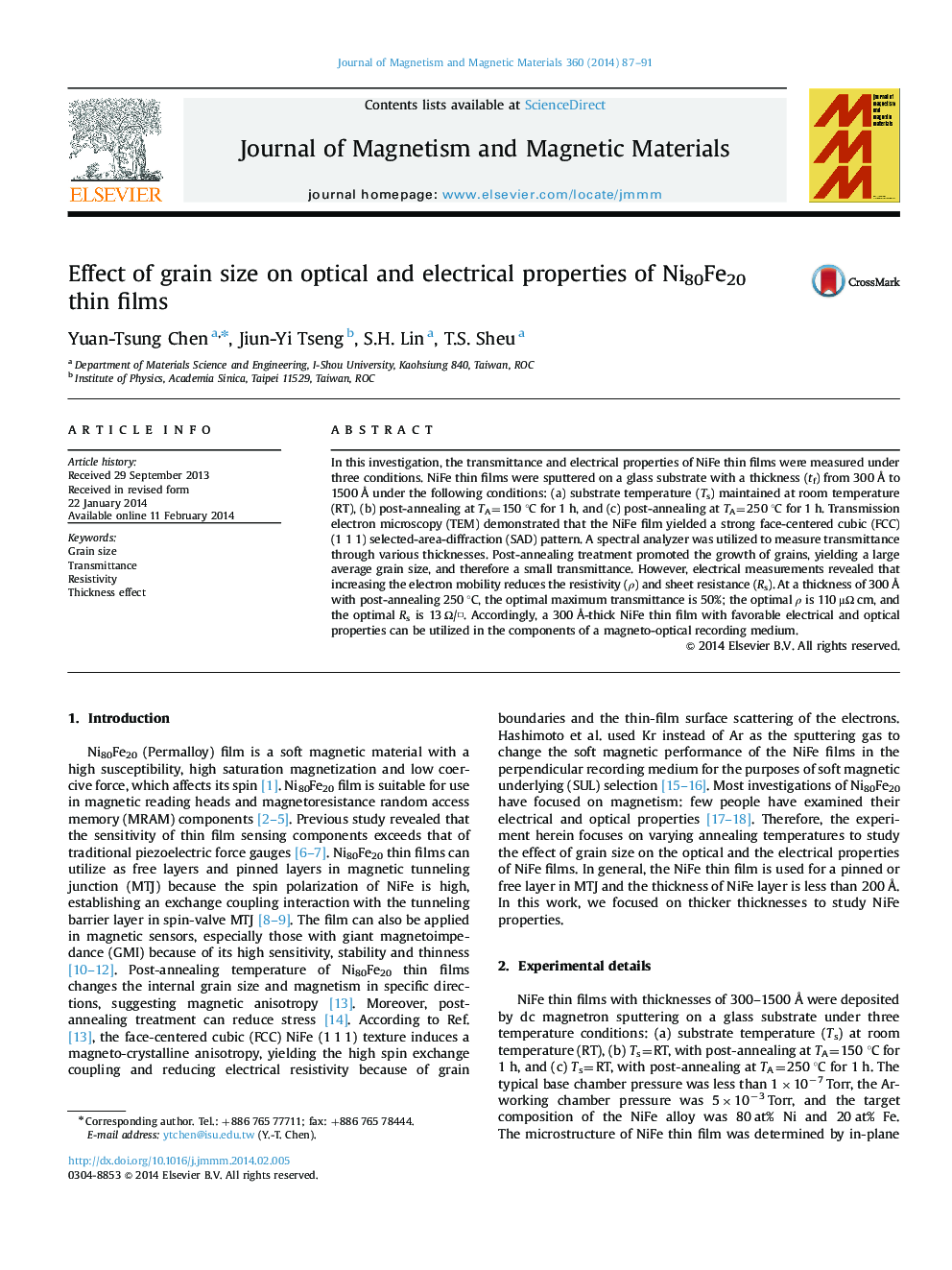| Article ID | Journal | Published Year | Pages | File Type |
|---|---|---|---|---|
| 8157399 | Journal of Magnetism and Magnetic Materials | 2014 | 5 Pages |
Abstract
In this investigation, the transmittance and electrical properties of NiFe thin films were measured under three conditions. NiFe thin films were sputtered on a glass substrate with a thickness (tf) from 300Â Ã
to 1500Â Ã
under the following conditions: (a) substrate temperature (Ts) maintained at room temperature (RT), (b) post-annealing at TA=150 °C for 1 h, and (c) post-annealing at TA=250 °C for 1 h. Transmission electron microscopy (TEM) demonstrated that the NiFe film yielded a strong face-centered cubic (FCC) (1 1 1) selected-area-diffraction (SAD) pattern. A spectral analyzer was utilized to measure transmittance through various thicknesses. Post-annealing treatment promoted the growth of grains, yielding a large average grain size, and therefore a small transmittance. However, electrical measurements revealed that increasing the electron mobility reduces the resistivity (Ï) and sheet resistance (Rs). At a thickness of 300 Ã
with post-annealing 250 °C, the optimal maximum transmittance is 50%; the optimal Ï is 110 μΩ cm, and the optimal Rs is 13 Ω/â¡. Accordingly, a 300 Ã
-thick NiFe thin film with favorable electrical and optical properties can be utilized in the components of a magneto-optical recording medium.
Related Topics
Physical Sciences and Engineering
Physics and Astronomy
Condensed Matter Physics
Authors
Yuan-Tsung Chen, Jiun-Yi Tseng, S.H. Lin, T.S. Sheu,
